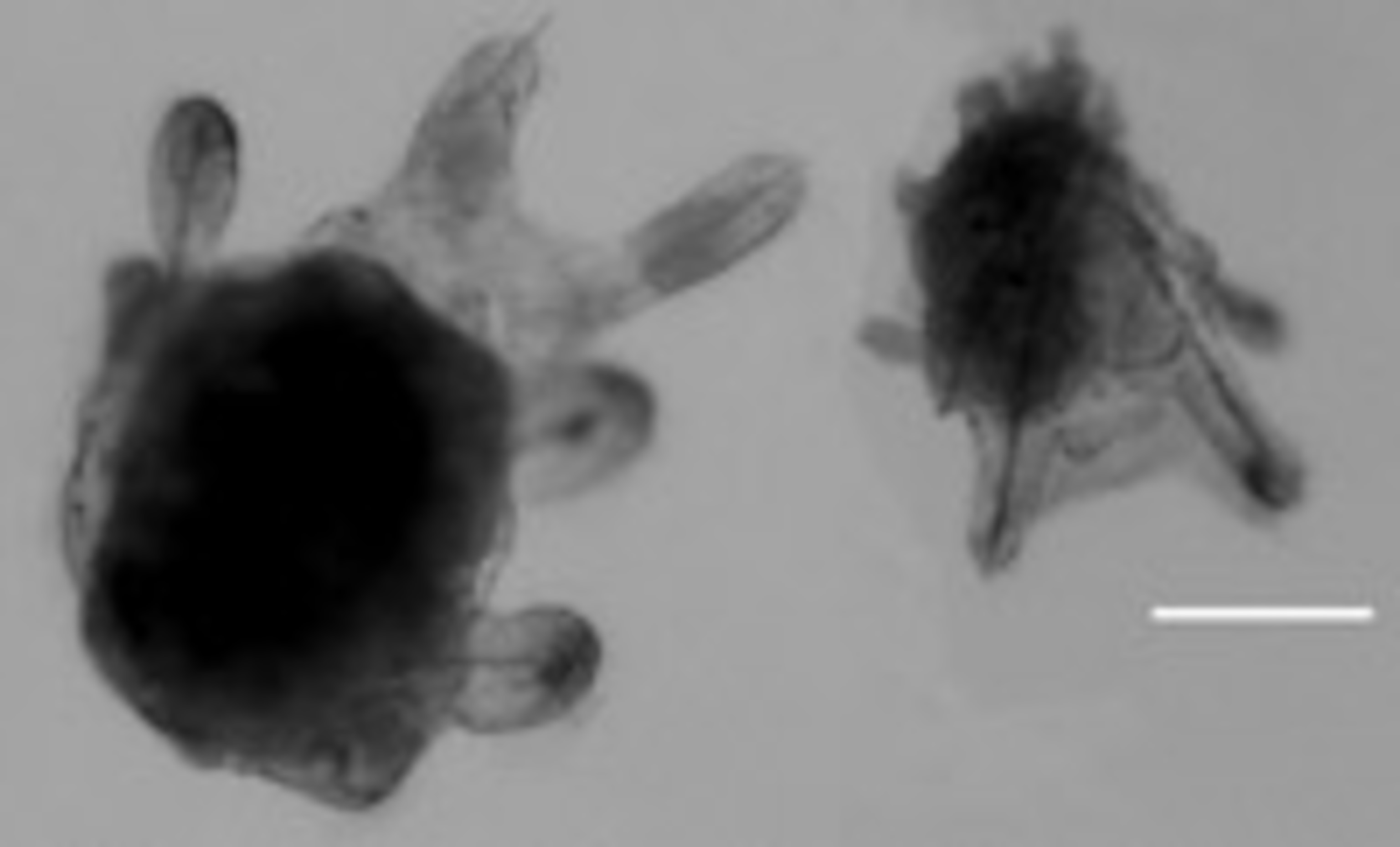Sand dollars avoid predators by cloning themselves
Many animals have cunning ways of hiding from predators. But the larva of the sand dollar takes that to an extreme – it avoids being spotted by splitting itself into two identical clones.

Sand dollars are members of a group of animals called echinoderms, that include sea urchins and starfish. An adult sand dollar (Dendraster excentricus) is a flat, round disc that lives a sedate life on the sea floor. Its larva, also known as a pluteus, is very different, a small, six-armed creature that floats freely among the ocean’s plankton.
A pluteus can’t swim quickly, so there is no escape for one if it is attacked by a hungry fish. Instead, Dawn Vaughan and Richard Strathmann from the University of Washington discovered that the pluteus relies on not being spotted in the first place.
They exposed 4-day-old larvae to water which contained mucus from the skin of a potential predator – the Dover sole. Within 24 hours, every single larva that was exposed to the mucus has grown a small bud that eventually detached and developed into a second larva, genetically identical to its parent and smaller in size. In contrast, larvae that were exposed to untouched seawater stayed undivided.

The tactic presumably works because hunters find smaller larvae harder to spot. As a result of the cloning process, the original larva halves in size. The newborn clones were smaller still and some were no bigger than a sand dollar egg cell, just an eighth of a millimetre across.
Almost all groups of echinoderms clone themselves in response to favourable temperatures and abundant food. In fact, asexual reproduction is a remarkably common tactic among plants and animals and is even used by some very unexpected species. It brings several advantages; by cloning itself, an animal can rapidly produce large swathes of offspring to make the most of plentiful times and over time, asexual reproduction can even allow a lineage to divert different copies of its genes to new purposes. But this is the first example of an animal using a virgin birth to defend itself.
Obviously, the tactic isn’t meant to protect the young sand dollar against an attack – even the slowest fish would have made a mouthful of the dividing larva within 24 hours. It’s more of a long-term strategy, allowing the larva to prepare itself for the presence of predators, as indicated by the smell of mucus in the water.
That’s not something that adult sand dollars can do. From their position on the sea floor, they have scant information about the risks that their young plutei may face and cannot alter the size of their eggs appropriately. Instead, Vaughan and Strathmann suggest that the cloning tactic allows the larvae themselves to alter their size in response to indicators of risk.
Reference: Vaughn, D., Strathmann, R.R. (2008). Predators Induce Cloning in Echinoderm Larvae. Science, 319(5869), 1503-1503. DOI: 10.1126/science.1151995
